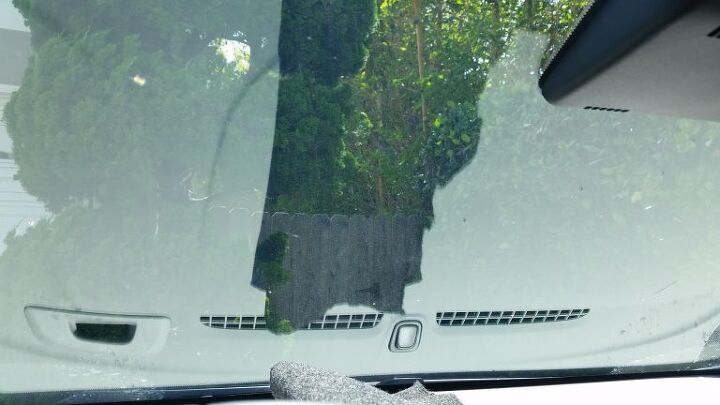#visibility
Piston Slap: Visibility's Unintended Rube Goldberg Effect?
TTAC Commentator Volvo writes:
Why does the design of most newer vehicles have very poor driver visibility for objects close to the car? This is pretty much all around but especially the rear. I find the current design even makes it difficult to judge front and rear bumper distance from an object. This definitely was not the case for most cars prior to 1995.- Is it to lower drag?
- Safety mandates?
- Just design esthetic?
Bulky A-pillars Getting in the Way? Toyota Has a Clear Solution
Back in the days of sky-high tailfins and wraparound windshields, A-pillars weren’t of sufficient thickness to hide little Timmy riding his bike, or maybe that Ford Fairlane approaching from behind that shrub to your left. No, front seat vision was grand — trying to stop your Detroit barge with unassisted drums brakes was the real challenge.
These days, the high-strength steel and airbags needed for rollover and side-impact protection have turned those slim pillars into Corinthian columns capable of hiding a small crowd. A-Pillars are bulky, and that’s a safety problem in itself.
What to do? In Toyota’s case, simply develop a way of seeing through them.
I (Can't) See Clearly Now: Chevrolet Bolt Owner Struggles to Fix His Dash's Blinding Glare
Last week, TTAC’s Bozi Tatarevic *cough* shed light on an issue facing owners of certain high-end Chevrolet Bolt EVs. In top-shelf Premier trim, the little hatchback offers airy Light Ash Gray and Ceramic White interiors, complete with an equally light-colored dash.
Unfortunately for buyers living in areas not perpetually enshrouded in fog, rain clouds, or 24-hour shadows, the reflection of sunlight off the palest dash is best described as retina-searing. A whiter shade of pale. The Trinity Test at 0.00001 seconds. In sunny climes, it’s nothing short of a serious safety issue, which explains complaints sent to the National Highway Traffic Safety Administration.
Short of wearing 1950s welder’s goggles bought at a Defence Department yard sale, a practice fraught with its own safety issues, owners are left figuring out a solution on their own. After we published the story, one owner reached out to show us just how bad the Bolt can be.
What's Wrong With This Picture: Receding Hairline Edition
Panoramic windscreens are something of a building trend in Europe’s premium-ish small car segments, combining the benefits of a sunroof with improved visibility. GM debuted the concept as a rarely-chosen option on the previous-generation Astra three-door, and it’s coming back with the forthcoming Astra GTC. Which raises an interesting question: since I’m convinced the GTC will come to the US as a Buick coupe, will this funky look come across the pond as well? Bob Lutz emphasized his preference for “glowering” low rooflines, telling TTAC that an early version of the forthcoming Cadillac ATS looked like “a kid with too large of a forehead” before he told designers to bring down the browline. Will an exception be made for this unique (to the US Market) feature on what should be one of GM’s most purely European cars? Or will Lutz’s aesthetic tastes doom GM buyers to observing traffic lights out of their side windows? Is this an option that other automakers should consider making available?
Ask The Best And Brightest: Which Cars Need Less A-Pillar?
Wards has a fascinating piece on the recent evolution of the A-pillar, starting with the aesthetic novelty of the B5 Passat and ending with the various roof crush and head-impact safety standards that are creating ever-larger and more vision-obstructing pillars. But is the added passive safety worth the trade-off in visibility, and therefore active safety? A researcher equivocates:
We lack quantitative models that express the safety cost of vision obstructions. We’ve worked on it, but it’s difficult to see the relationships in crash data. People are highly adaptive, and any vision effects are buried in other larger effects due to exposure and driving style.
Inspired by the write-up, I found that the Royal Automobile Club of Victoria (Australia) has its own annual forward visibility rating system, and that it refused to give a single 2011 model-year vehicle a five-star rating (in a rare display of respect for the five-star system). Without a rating system of our own, I thought TTAC should embrace the subjectivity of the subject matter and pool its collective wisdom to help the automakers understand which vehicles need an A-pillar diet. Which vehicles feel the least safe in terms of forward visibility? Which need window inserts and which need to just slim down? Or have we reached the point where we need A-pillar cameras?


















Recent Comments